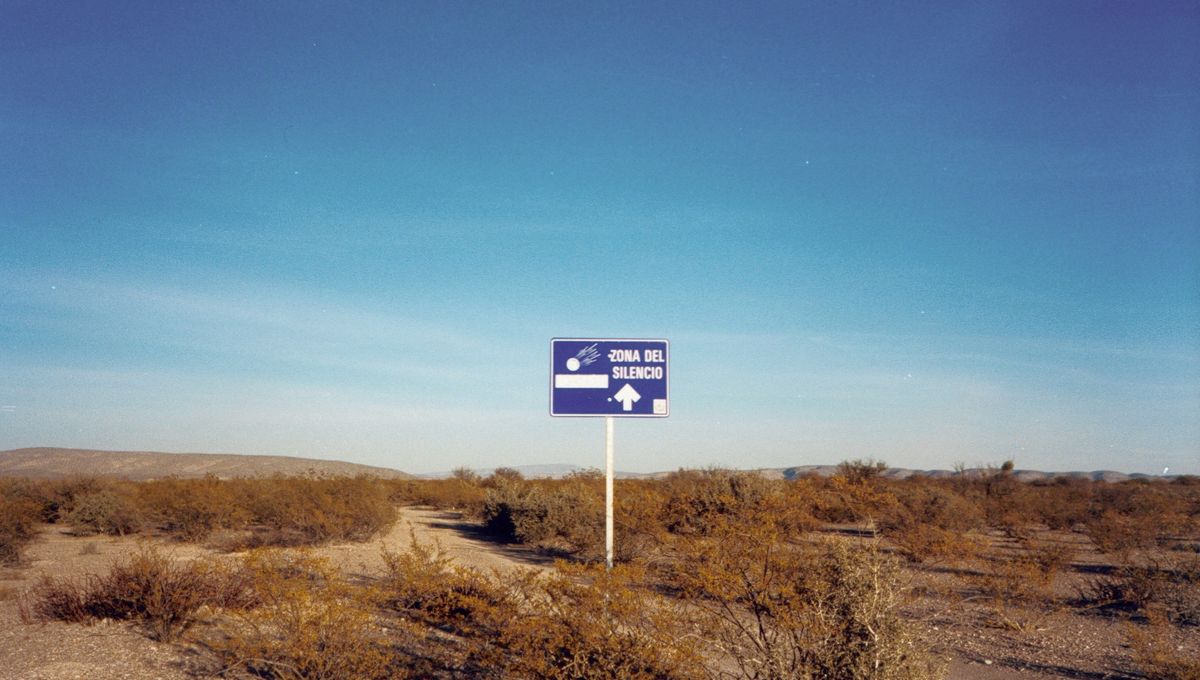
The planet Earth is a big, strange place. There are places where it can reach −50°C (−58°F) in one month and nearly +39°C (102°F) in another; there’s an apparently bottomless sinkhole in Oregon; there are literally nearly a dozen islands out there that are ruled by cats. And yet, for some reason, we still feel the need to create places like the Mapimí Silent Zone.
What is the Mapimí Silent Zone, you ask? Think of it as Mexico’s land-based answer to the Bermuda Triangle: it’s a patch of desert just 50 kilometers (31 miles) across in the Mapimí Biosphere Reserve, near the Bolsón de Mapimí in Durango. And, if local legends are to be believed, it’s weird. Really weird.
“There are lots of stories of aliens and unidentified flying objects in the Zone,” Geraldo Rivera, a Chihuahua UFO investigator, told Atlas Obscura. “People often get lost in the Zone. When this happens, sometimes tall blond beings appear out of nowhere.”
Not only is the area supposedly home to groups of supermodel alien Vikings, but there’s the name: la Zona del Silencio, or the Zone of Silence. It’s called that because – according to the urban myths that surround the place – it’s filled with magnetic waves so strange and unique that radio transmissions and communication signals cannot be transmitted.
It all sounds very mystical and odd – but is it true? While the area has definitely had quite a few visitors from outer space over the years, none so far have been tall and blond – round and rocky is more like it. At least three different meteorites hit the area across barely the same number of decades in the 20th century: one in 1938, another in 1954 – which, amazingly, hit the same ranch as its predecessor – and a third in 1969.
But those three separate meteorite hits aren’t the strangest thing that’s ever hit the Mapimí Silent Zone – that happened in July 1970, when the US Air Force sent an Athena rocket out of Green River, Utah, and into the upper atmosphere of the planet. It should have come down in New Mexico; instead, it crash-landed in the original version – right in the heart of the Zone of Silence.
Nobody knows for sure what happened to make the rocket go so far off course, but it caused a media storm that secured the Silent Zone a place in the public imagination for decades to come.
Wernher von Braun, the Nazi scientist who helped pioneer the US space program, came to investigate the crash site, along with hundreds of locals hired by the US Air Force. When the rocket was discovered, a 28-day excavation process was set in motion, with “Americans [bringing] temporary dormitories, labs, kitchens, medical facilities, and set[ting] them up right here in the desert,” according to Benjamin Palacios, owner of a UFO-themed ranch next to the Zone.
“They even built a runway to transport cargo directly to Houston,” he told Atlas Obscura. “By rail, they hauled away tons of debris.”
So: an unexpected rocket crash, a clandestine clean-up operation, and a history of extra-terrestrial activity – the area had everything a good conspiracy theory needs to get going. But the kicker came in 1966, when, thanks to an oil company’s explorer and his dodgy radio, the area was given the mysterious moniker we know it by today: the Silent Zone.
But why would the area be so disruptive to radio signals? The local zoneros who chase the legends and guide tourists through the Zone blame underground deposits of magnetite, plus debris from the meteorites, for interfering with transmissions. But scientific researchers in the region have a different answer.
“Neither I nor anyone with whom I spoke (apart from the zoneros) had any trouble with either their radios or compasses while working in the Reserve,” Andrea Kaus, who did her doctoral dissertation about the Mapimí Biosphere Reserve, told HowStuffWorks.
“The claims of mutations refer to natural phenomena; the triangles are a normal pattern variant in the Bolson tortoise populations and the pads of nopal coyotillo turn a shade of violet during a dry spell.”
[H/T: NewsBreak]
Source Link: What Is The Mapimí Silent Zone – And What Made It Silent?